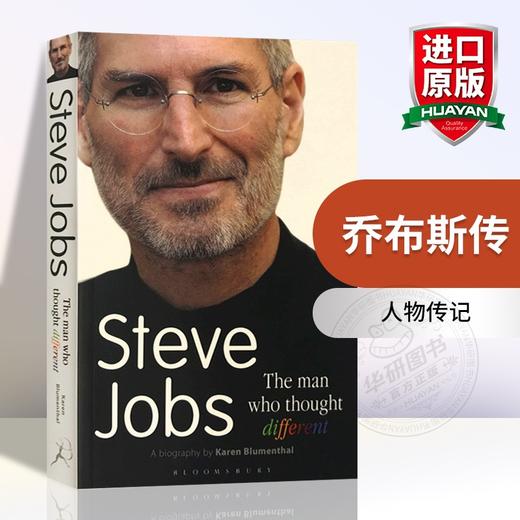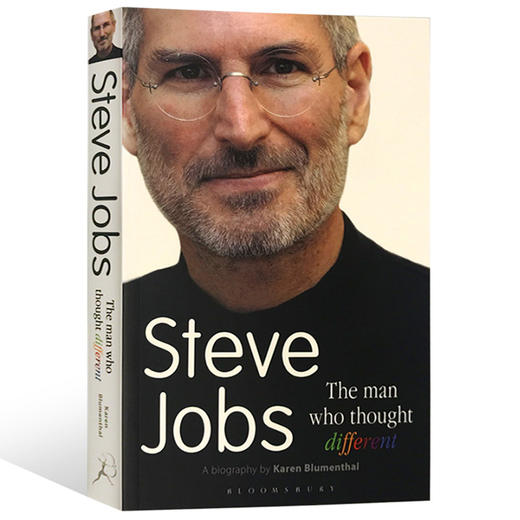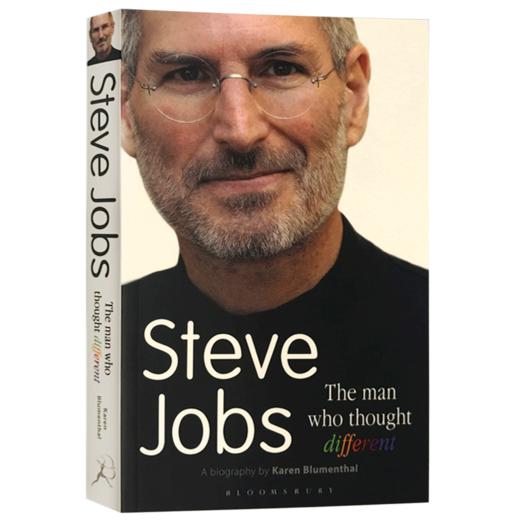乔布斯传 英文原版书 Steve Jobs The Man Who Thought Different 苹果教父乔布斯 英文版人物传记 进口英语书籍正版
| 运费: | ¥ 0.00-999.00 |
| 库存: | 457 件 |
商品详情
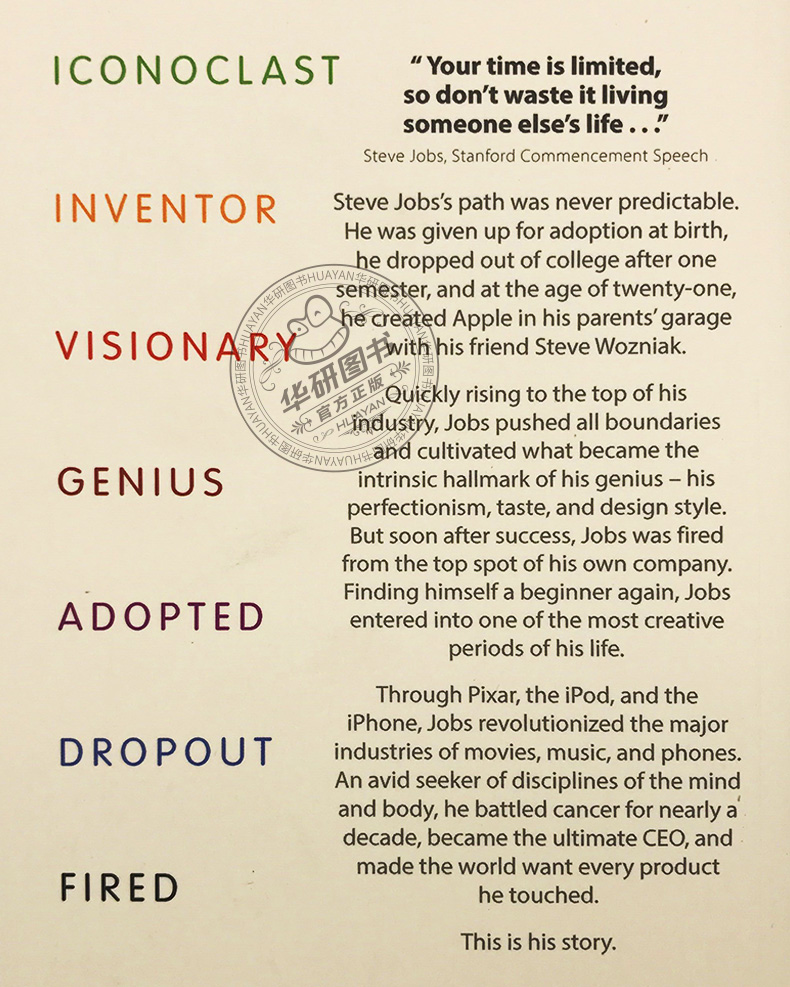
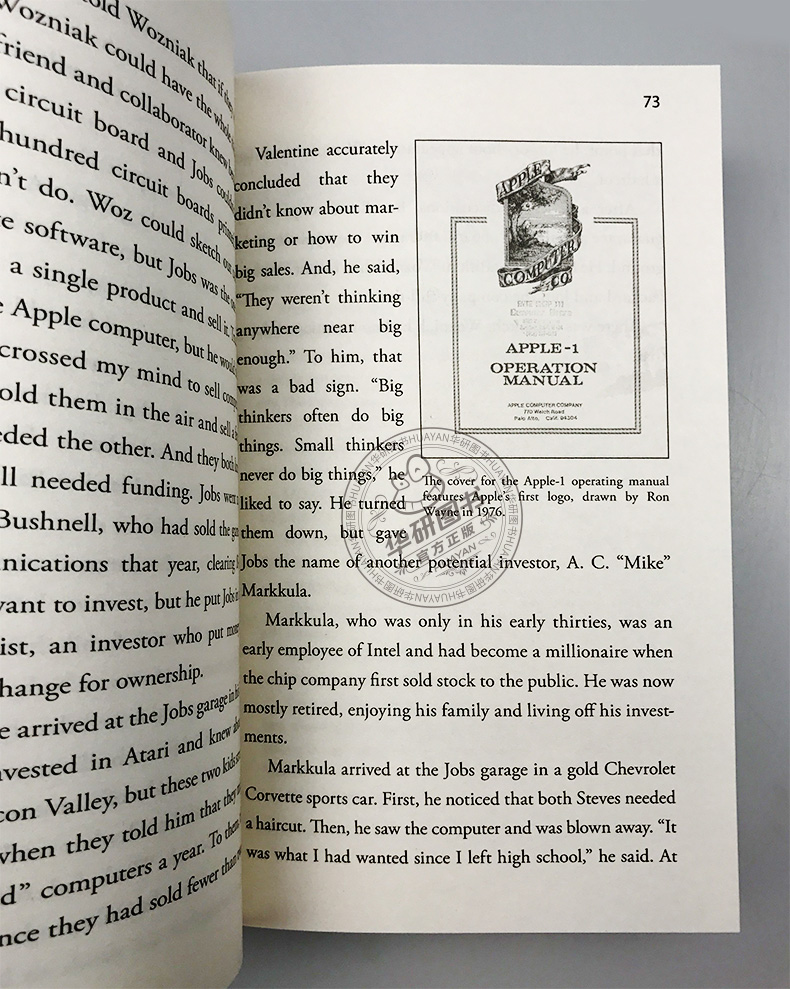
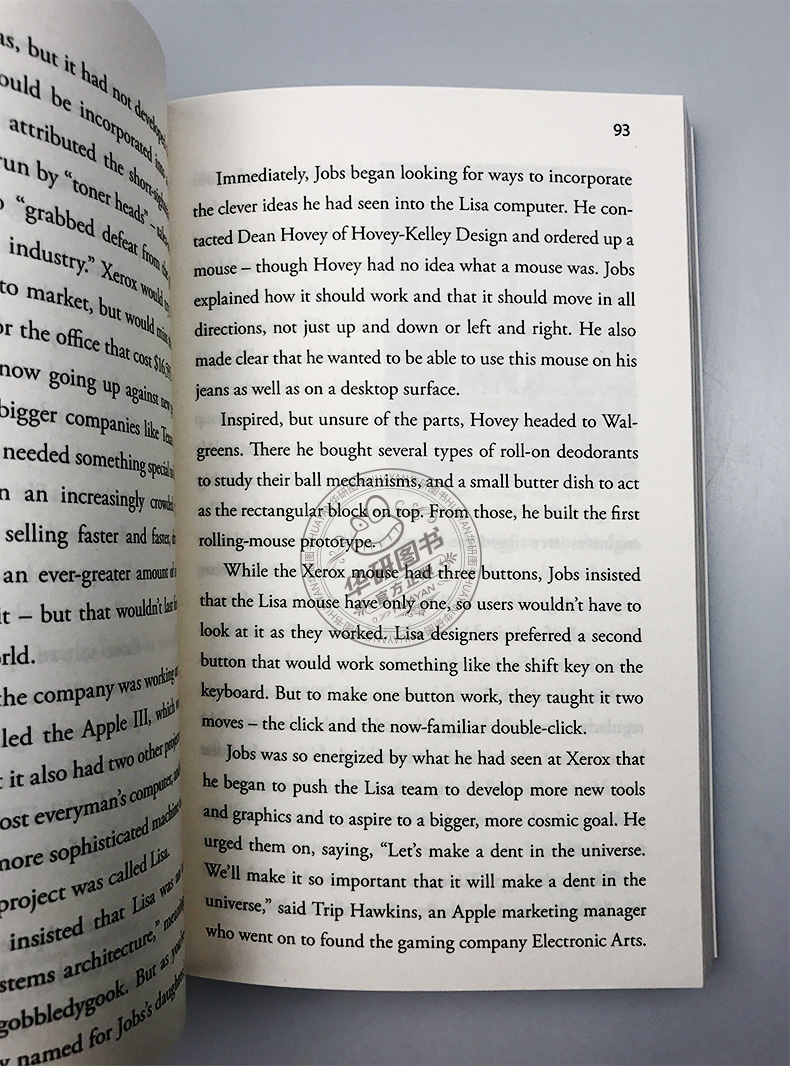
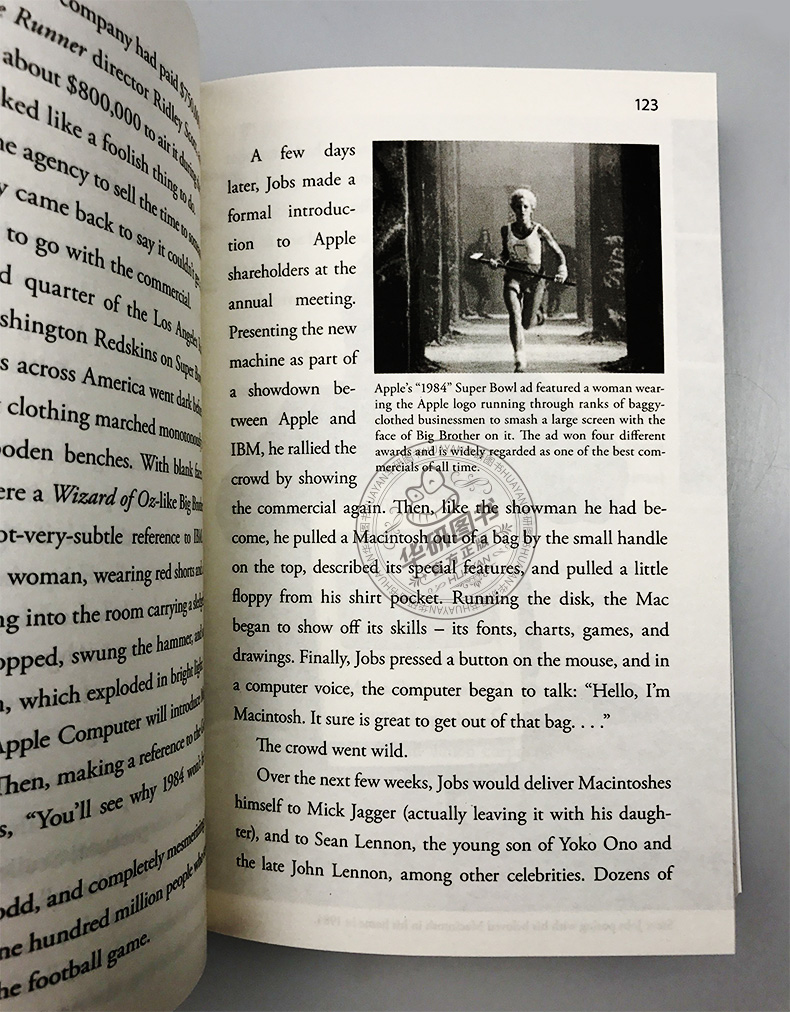
 书名:Steve Jobs The Man Who Thought Different乔布斯传
书名:Steve Jobs The Man Who Thought Different乔布斯传
作者:Karen Blumenthal
出版社名称:Bloomsbury UK
出版时间:2012
语种:英文
ISBN:9781408832066
商品尺寸:13 x 2 x 19.8 cm
包装:平装
页数:322 “苹果教父”史蒂夫·乔布斯经历了苹果公司几十年的起落与兴衰,被认为是计算机业界与娱乐业界的标志性人物。本书Steve Jobs: The Man Who Thought Different《乔布斯传》向读者详细介绍了乔布斯的传奇人生,从坎坷的童年经历、大学辍学,到创立苹果公司、发布一件又一件新产品,再到与癌症抗争的十几年……乔布斯成为了“改变世界的人”,带给我们“面向未来”的勇气和能力。通过阅读这本传记,我们可以更加全面、深入地了解乔布斯的一生,学习他的创新能力和直面困难的精神。对于乔布斯的粉丝来说,本书具有一定的收藏价值。
“苹果教父”史蒂夫·乔布斯经历了苹果公司几十年的起落与兴衰,被认为是计算机业界与娱乐业界的标志性人物。本书Steve Jobs: The Man Who Thought Different《乔布斯传》向读者详细介绍了乔布斯的传奇人生,从坎坷的童年经历、大学辍学,到创立苹果公司、发布一件又一件新产品,再到与癌症抗争的十几年……乔布斯成为了“改变世界的人”,带给我们“面向未来”的勇气和能力。通过阅读这本传记,我们可以更加全面、深入地了解乔布斯的一生,学习他的创新能力和直面困难的精神。对于乔布斯的粉丝来说,本书具有一定的收藏价值。
A riveting biography of the groundbreaking innovator who was a giant in the worlds of computing, music, filmmaking, design, smart phones, and more. A finalist for the YALSA Excellence in Nonfiction Award!
"Your time is limited. . . . have the courage to follow your heart and intuition." —Steve Jobs
From the start, his path was never predictable. Steve Jobs was given up for adoption at birth, dropped out of college after one semester, and at the age of twenty, created Apple in his parents' garage with his friend Steve Wozniack.
Then came the core and hallmark of his genius—his exacting moderation for perfection, his counterculture life approach, and his level of taste and style that pushed all boundaries. A devoted husband, father, and Buddhist, he battled cancer for over a decade, became the ultimate CEO, and made the world want every product he touched, from the Macintosh to the iPhone, from iTunes and the iPod to the Macbook.
Critically acclaimed author Karen Blumenthal takes us to the core of this complicated and legendary man while simultaneously exploring the evolution of computers. Framed by Jobs' inspirational Stanford commencement speech and illustrated throughout with black and white photos, this is the story of the man who changed our world.
Review
“This is a smart book about a smart subject by a smart writer.” —Booklist, starred review
“Students who know Steve Jobs only through Apple's iTunes, iPhones, and iPads will have their eyes opened by this accessible and well-written biography.” —VOYA
“An engaging and intimate portrait. Few biographies for young readers feel as relevant and current as this one does.” —The Horn Book Magazine
“A perceptive, well-wrought picture of an iconic figure.” —Kirkus Reviews
“Blumenthal crafts an insightful, balanced portrait.” —Publishers Weekly Karen Blumenthalhas been a financial journalist for more than 25 years. In more than two decades with The Wall Street Journal, she covered retailing, oil and gas, housing, mergers, and bankruptcies, and was Dallas bureau chief for eight years, supervising a dozen reporters covering an eight-state territory. In that role, she coordinated and edited one of the Sept. 11, 2001, stories that won the 2002 Pulitzer Prize for spot-news reporting. From 2008 to 2013, she wrote the paper's Getting Going personal finance column. She is a graduate of Duke University and has an MBA from Southern Methodist University. She and her husband, Scott McCartney, have two daughters and live in Dallas.
Karen Blumenthalhas been a financial journalist for more than 25 years. In more than two decades with The Wall Street Journal, she covered retailing, oil and gas, housing, mergers, and bankruptcies, and was Dallas bureau chief for eight years, supervising a dozen reporters covering an eight-state territory. In that role, she coordinated and edited one of the Sept. 11, 2001, stories that won the 2002 Pulitzer Prize for spot-news reporting. From 2008 to 2013, she wrote the paper's Getting Going personal finance column. She is a graduate of Duke University and has an MBA from Southern Methodist University. She and her husband, Scott McCartney, have two daughters and live in Dallas. Steve Jobs’s first story involved connecting dots, and it began with a most unusual promise.
Steve Jobs’s first story involved connecting dots, and it began with a most unusual promise.
Joanne Schieble was just twenty-three and attending graduate school In Wisconsin when she learned she was pregnant. Her father didn’t approve of her relationship with a Syrian-born graduate student, and social customs in the 1950s frowned on a woman having a child outside of marriage. To avoid the glare, Schieble moved to San Francisco and was taken in by a doctor who took care of unwed mothers and helped arrange adoptions.
Originally, a lawyer and his wife agreed to adopt the new baby. But when the child was born on February 24, 1955, they changed their minds.
Clara and Paul Jobs, a modest San Francisco couple with some high school education, had been waiting for a baby. When the call came in the middle of the night, they jumped at the chance to adopt the newborn, and they named him Steven Paul.
Schieble wanted her child to be adopted by college-educated parents. Before the adoption could be finalized, however, she learned that neither parent had a college degree. She balked and only agreed to complete the adoption a few months later, “when my parents promised that I would go to college,” Jobs said.
Signing on to the hope of a bright future for their baby, the Jobs family settled In, adopting a daughter, Patty, a couple of years later. Little Steve proved to be a curious child, and a challenging one to rear. He put a bobby pin into an electrical outlet, winning a trip to the emergency room for a burned hand. He got into ant poison, requiring yet another trip to the hospital to have his stomach pumped. To keep Steve busy when he got up before the rest of the household, his parents bought him a rocking horse, a record player, and some Little Richard records. He was so difficult as a toddler, his mother once confided, that she wondered if she had made a mistake adopting him.
When Steve was five, his father, Paul, was transferred to Palo Alto, about forty-five minutes south of San Francisco. After serving in the Coast Guard during World War II, Paul had worked as a machinist and used-car salesman, and now was working for a finance company collecting bad debts. In his free time, he fixed up used cars and sold them for a profit, money that would go to Steve’s future college fund.
The area south of San Francisco was largely undeveloped then and dotted with apricot and prune orchards. The family bought a house in Mountain View, and as Paul put together his workshop in the garage, he set aside a part of it, telling his son, “Steve, this is your workbench now.” He taught Steve how to use a hammer and gave him a set of smaller tools. Over the years, Jobs remembered, his dad “spent a lot of time with me ... teaching me how to build things, how to take things apart, put things back together.”
His father’s careful craftsmanship and commitment to the finest details made a deep impression. He “was a sort of genius with his hands. He can fix anything and make it work and take any mechanical thing apart and get it back together,” Jobs told an interviewer in 1985. His father also stressed the importance of doing things right. For instance, his son learned, “When you’re a carpenter making a beautiful chest of drawers, you’re not going to use a piece of plywood on the back, even though it faces the wall and nobody will ever see it. You’ll know it’s there, so you’re going to use a beautiful piece of wood on the back.”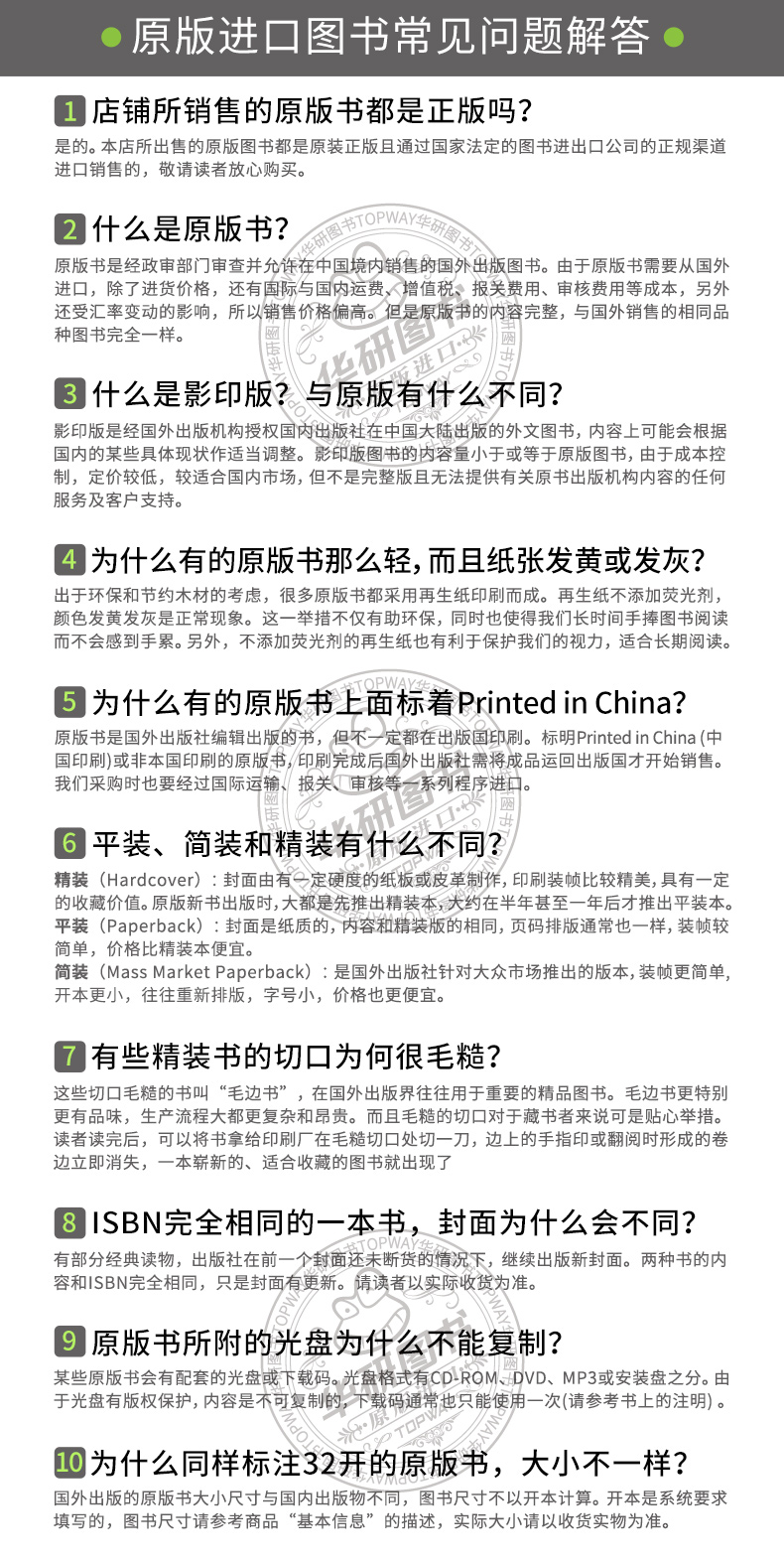
- 华研外语 (微信公众号认证)
- 本店是“华研外语”品牌商自营店,全国所有“华研外语”、“华研教育”品牌图书都是我司出版发行的,本店为华研官方源头出货,所有图书均为正规正版,拥有实惠与正版的保障!!!
- 扫描二维码,访问我们的微信店铺
- 随时随地的购物、客服咨询、查询订单和物流...
